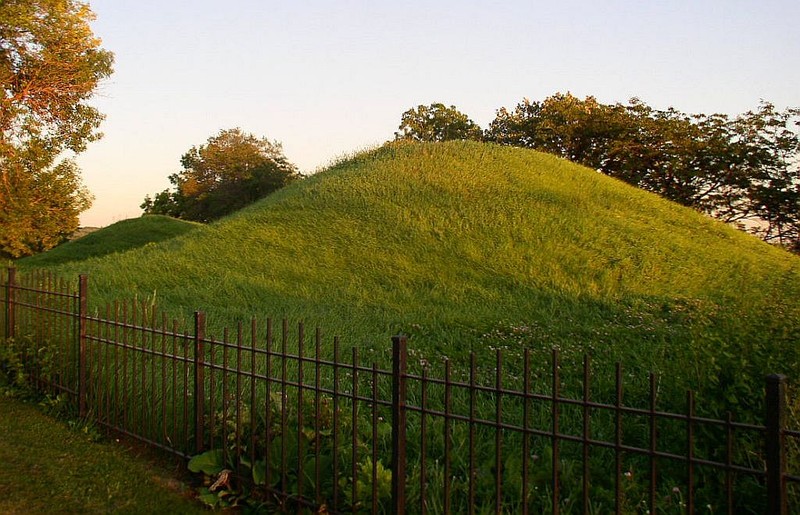Indian Mounds Regional Park
Introduction
Text-to-speech Audio
Established in the late 1800s, this 17-acre park features six ancient burial mounds, the earliest of which date back between 1,500-2,000 years ago. These early mounds were created by the people of the Hopewell culture. As such, this site is the only distinctly Hopewell site in the state, and one of northernmost examples of this culture in the country. For centuries, Native Americans buried their dead here, including the Dakota peoples. The mounds rest on limestone rock that is 450 million years old. Originally there were at least 16 mounds at this location and 19 more nearby above what is now Carver's Cave but these have been lost to development over the years. The site was placed on the National Register of Historic Places in 2014.
Images
Indian Mounds Regional Park was founded in the 1890s to save these and the other remaining prehistoric mounds.

Backstory and Context
Text-to-speech Audio
The city started to buy the land that is now the park in 1890 in order to protect what remained of the mounds. Excavations first took place in the 1850s. Some excavations were not done carefully—mounds were simply dug up—and unfortunately looting took place as well. Nonetheless, excavations revealed several types of including small bundle burials, log tombs, put burials, and simple burials. A few contained a variety of death offerings such as projectile points, copper ornaments, and bear teeth.
Sources
"Indian Mounds Regional Park." City of St. Paul. Accessed April 3, 2017. https://www.stpaul.gov/facilities/indian-mounds-regional-park.
Sigrid Arnott, Geoff Jones, & David Maki. "Indian Mounds Park Mound Group." National Park Service - National Register of Historic Places Nomination Form. April 11, 2014. https://www.nps.gov/nr/feature/places/pdfs/14000140.pdf.
Photo: McGhiever, via Wikimedia Commons
Sigrid Arnott, Geoff Jones, & David Maki. "Indian Mounds Park Mound Group." National Park Service - National Register of Historic Places Nomination Form. April 11, 2014. https://www.nps.gov/nr/feature/places/pdfs/14000140.pdf.
Photo: McGhiever, via Wikimedia Commons
